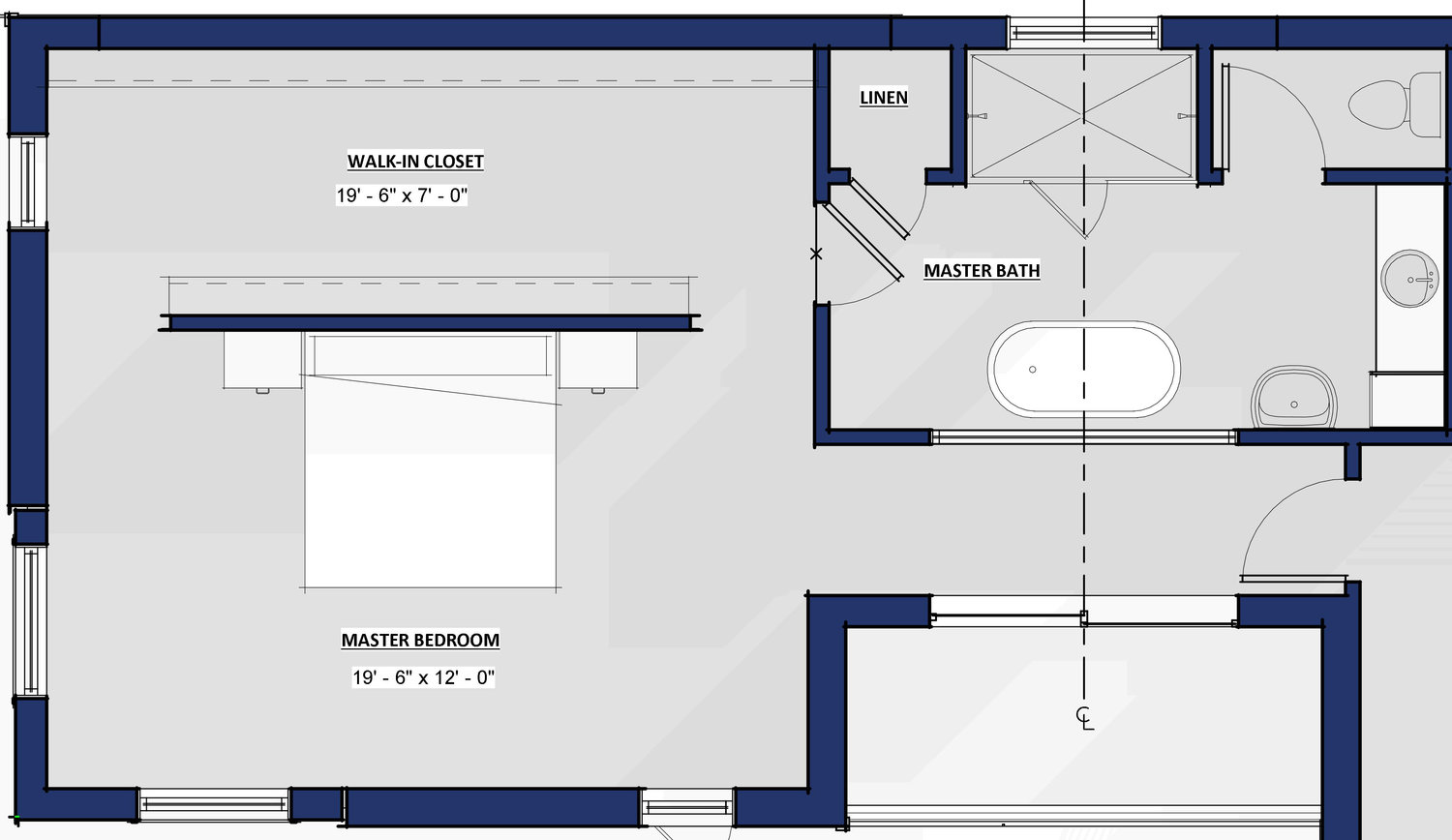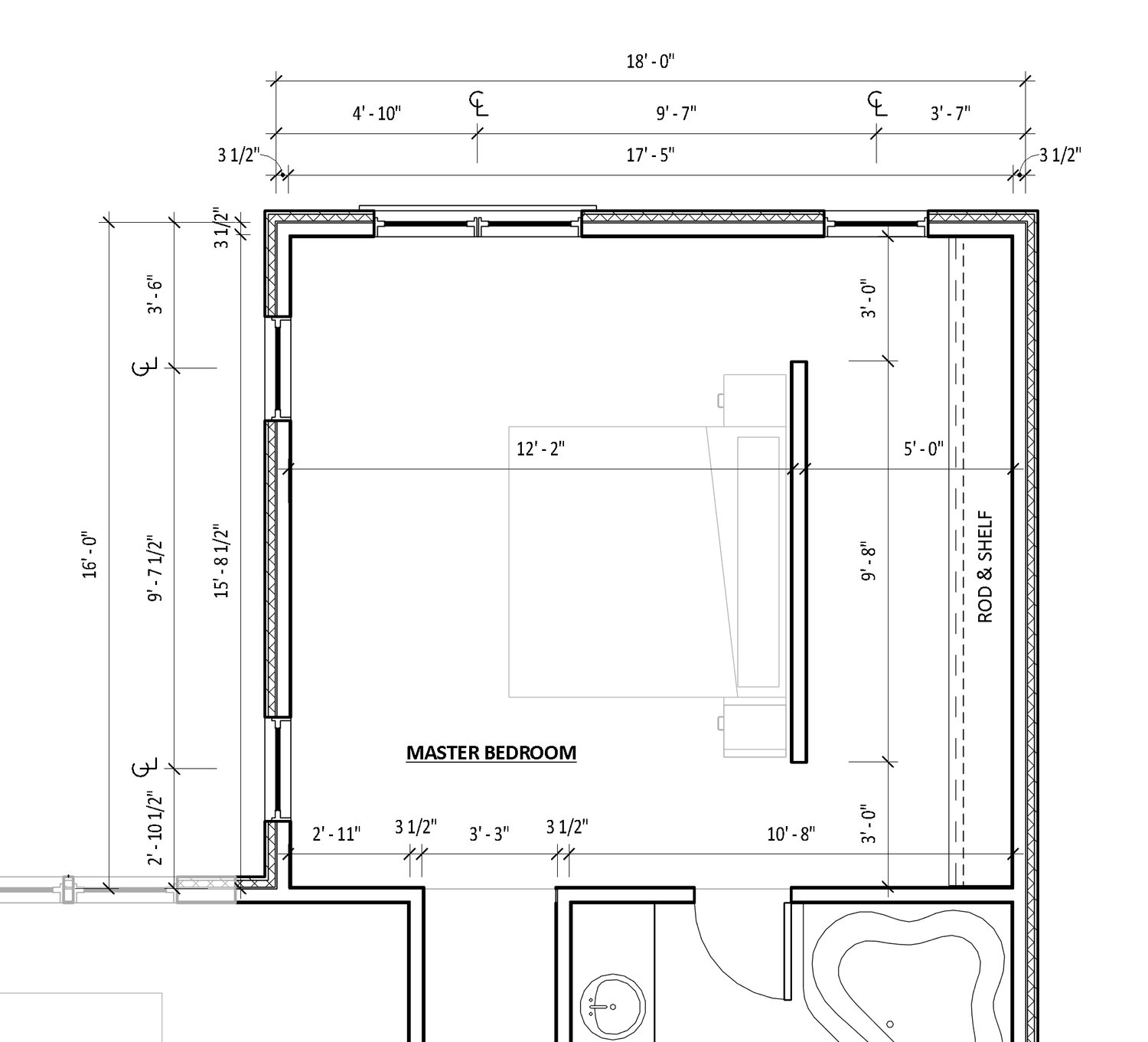
We also need to insulate our wall system, as well as make it air tight to keep the interior temperature stable with minimal energy consumption. Speaking strictly about energy efficiency, the number one thing you can do to reduce your heating and cooling is to build an air-tight house. This is even more important than insulation!
From inside to outside, the typical old school wall would have been composed of ½” drywall, then 2×4 wood studs placed at 16” on center, then 7/8” OSB or plywood sheathing, then a Tyvek house wrap (vapor barrier) and finally some type of vinyl, wood or cementitious siding or a masonry veneer. The stud cavities (space between the 2×4 studs) would be filled with Batt Insulation giving you an R value of between R13 and R15.
A version of this wall dominated US home construction from the early 1970s until the 2009 IECC (International Energy Conservation Code) required an improvement to its performance. The code acknowledged the importance of “thermal bridging,” which was the point that each of those studs touched both the interior and exterior faces and interrupted the insulation. IECC would require that the wall studs either increase to 2×6 (resulting in more space for insulation), OR they could remain at the 2×4 IF an exterior sheathing with an insulation value was used. The trade off is that a 2×6 is more expensive than a 2×4, but simply using Batt insulation in a 2×6 wall ends up being cheaper than buying and installing that exterior insulation. From a thermal performance standpoint, the 2×4 wall with exterior insulation is superior to the 2×6 wall with cavity insulation only.
The Exterior: (mostly about shedding bulk water…and looking good doing it)
The exterior is what you see on the outside and is thus wholly related to the aesthetics of your house, as covered in a previous wall aesthetics post. From a performance standpoint the exterior siding physically protects the assembly from wind and the majority of the rain (bulk water).
For years the exterior layer was also constructed to protect against water getting into the wall assembly, and was attached directly to any vapor barrier or retarder that was wrapping the exterior sheeting
Given the near certainty of water getting behind the siding, it is more commonly accepted today to install the siding with an air gap behind it so that intruding water will flow out or dry out before entering the interior. This can be done as a cavity wall or a rain screen, and although it is not the standard practice in the Mid-Atlantic region (yet) it is required by building code in some of the rainiest climates in our country, like the Pacific Northwest.
The Middle: (all about everything)
The Outer Middle: (mostly about moisture and air tightness…your first air barrier))
Just behind the exterior you will typically have the vapor barrier or retarder. This is basically a wrap that will keep moisture from entering your wall system. In so doing it will mitigate the problem of having moisture condense inside of your wall. The critical problem with these building wrap products is making sure that they are sealed at all penetrations and building breaks.
It is important that your architect specify how these details should be executed, and that your builder performs this work exactly as detailed.
The Inner Middle (Mostly about insulation)
The middle of the wall system usually contains the structure which in most houses these days is wood studs. Since the structure creates cavities the middle is always a place to build up the insulation and thus the R-value of the wall. This is often done cost effectively with either batt or blown-in cellulose insultion.Unfortunately, if those studs touch the exterior you will create a thermal bridge at each stud. This is best dealt with by using additional insulation across the outside face of the wall. The exterior insulation is typically some type of rigid foam that can receive the rain screen design.
The Interior: (a good place to stay airtight…for your second air barrier)
The interior surface of the vast majority of homes being built today, regardless of style, is drywall, also known as gypsum board. Rather than dwell on this we will just acknowledge its primary role from a performance standpoint.
It is the final air barrier, so it needs to be taped and sealed properly. This can get tricky in locations we call penetrations such as boxes for electric outlets and light switches, but the windows and doors also provide a sealing challenge as well as being a blog category unto themselves.
Conclusion:
There are an abundance of wall assemblies, designs, and even proprietary systems available. This has touched on some very basic general concepts that are probably geared toward more conventional frame construction in non-severe climates in the United States.
You will hear people say that a house can be “too tight” or that you can insulate too much. Its true that a house does need to maintain an adequate fresh air supply and that you can reach a point of diminishing return with regard to insulation, but that is what design is about. Understand your climate, and your building orientation. Design your wall appropriately.
If you can mitigate moisture, remain relatively air tight, and insulate as much as possible, you will have a comfortable house, with minimal energy use and excellent air quality. In other words, it will be just right.
Discover more from reviewer4you.com
Subscribe to get the latest posts to your email.





